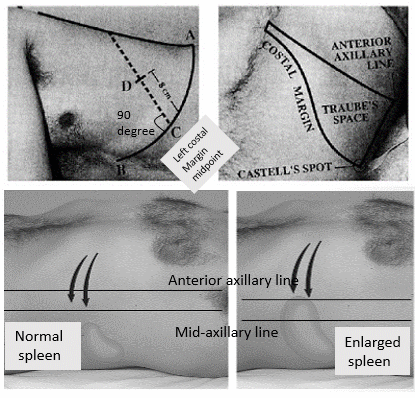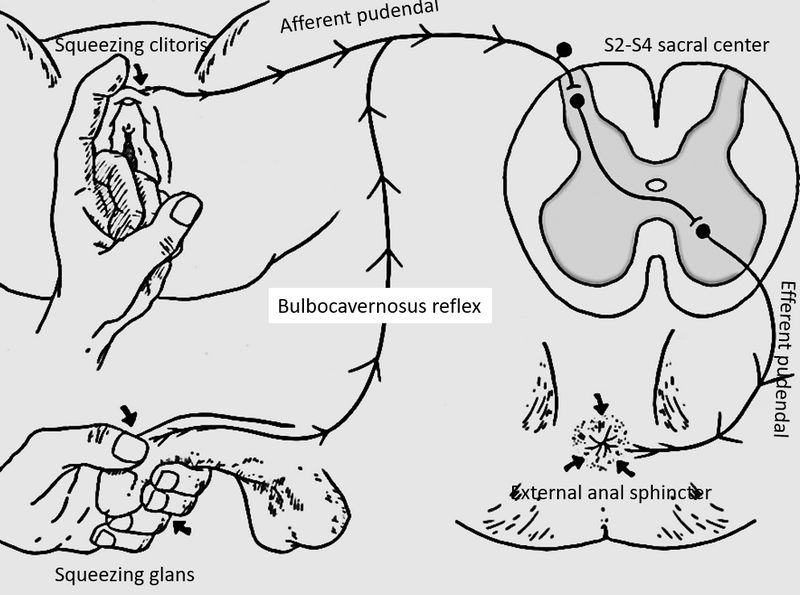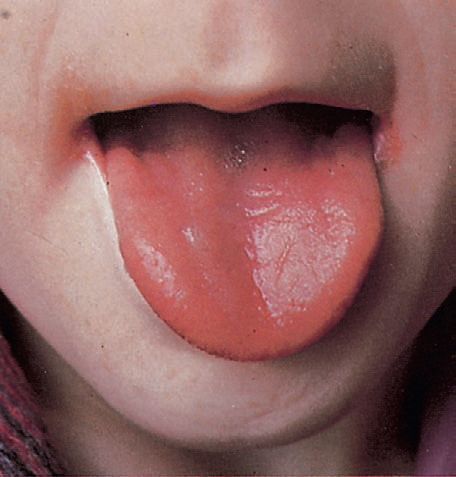Traube’s semilunar space
Borders:
- Superiorly: Left 6th rib superiorly
- Laterally: Left midaxillary line or Left anterior axillary line
- Inferiorly: Left costal margin
Method:
- Patient’s position: supine with left arm slightly abducted.
- Percuss: from medial to lateral
Interpretation: Resonance (Normal) and Dullness (Splenomegaly)
- Also: Pleural effusion or mass in stomach may cause dullness in Traube’s space.
Castell’s method
Patient’s position: Supine
Percuss: In the lowest intercostal space in the anterior axillary line (8th or 9th)
Interpretation:
- Resonant percussion note on expiration or full inspiration: normal
- Dull percussion note on full inspiration: splenomegaly

Nixon’s method
Patient’s position: Right lateral decubitus (rationale: spleen comes to lie above colon and stomach).
Percuss: start percussing midway along the left costal margin and proceed in a line perpendicular to left constal margin
Interpretation: Upper limit of dullness >8 cm above costal margin: Splenic enlargement



As for Nixon’s method- if dullness is beyond 8cms on a perpendicular line from middle of left costal margin,it means spleen is enlarged upto costal margin.This can be easily picked up by hooking method or Medleton’s manuare.Nixon’s method becomes superfluous.
Well ,dullness lower anterior chestwall may indicate pleural effusion or pleural thickening or even a fundal growth in the stomach .We need to ponderon that.
A simple ultrasound
Willsufice for 100 percent diagnosis
1. Physical examination for splenomegaly have sensitivity ranging from 11 to 85 % and specificity from 32 to 99 %. Physical examination plus POCUS had a sensitivity of 100 % and specificity of 74 %.
Reference: Olson AP, Trappey B, Wagner M, Newman M, Nixon LJ, Schnobrich D. Point-of-care ultrasonography improves the diagnosis of splenomegaly in hospitalized patients. Crit Ultrasound J. 2015 Dec;7(1):13. doi: 10.1186/s13089-015-0030-8. Epub 2015 Sep 17. PMID: 26383010; PMCID: PMC4574040.
2. Sonographic versions of traditional physical examination maneuvers have greater diagnostic accuracy than the physical examination maneuvers from which they are derived but may take longer to perform. We recommend a combination of traditional physical examination and sonographic techniques when evaluating for splenomegaly at the bedside.
Reference: Cessford T, Meneilly GS, Arishenkoff S, Eddy C, Chen LYC, Kim DJ, Ma IWY. Comparing Physical Examination With Sonographic Versions of the Same Examination Techniques for Splenomegaly. J Ultrasound Med. 2018 Jul;37(7):1621-1629. doi: 10.1002/jum.14506. Epub 2017 Dec 8. PMID: 29219201.